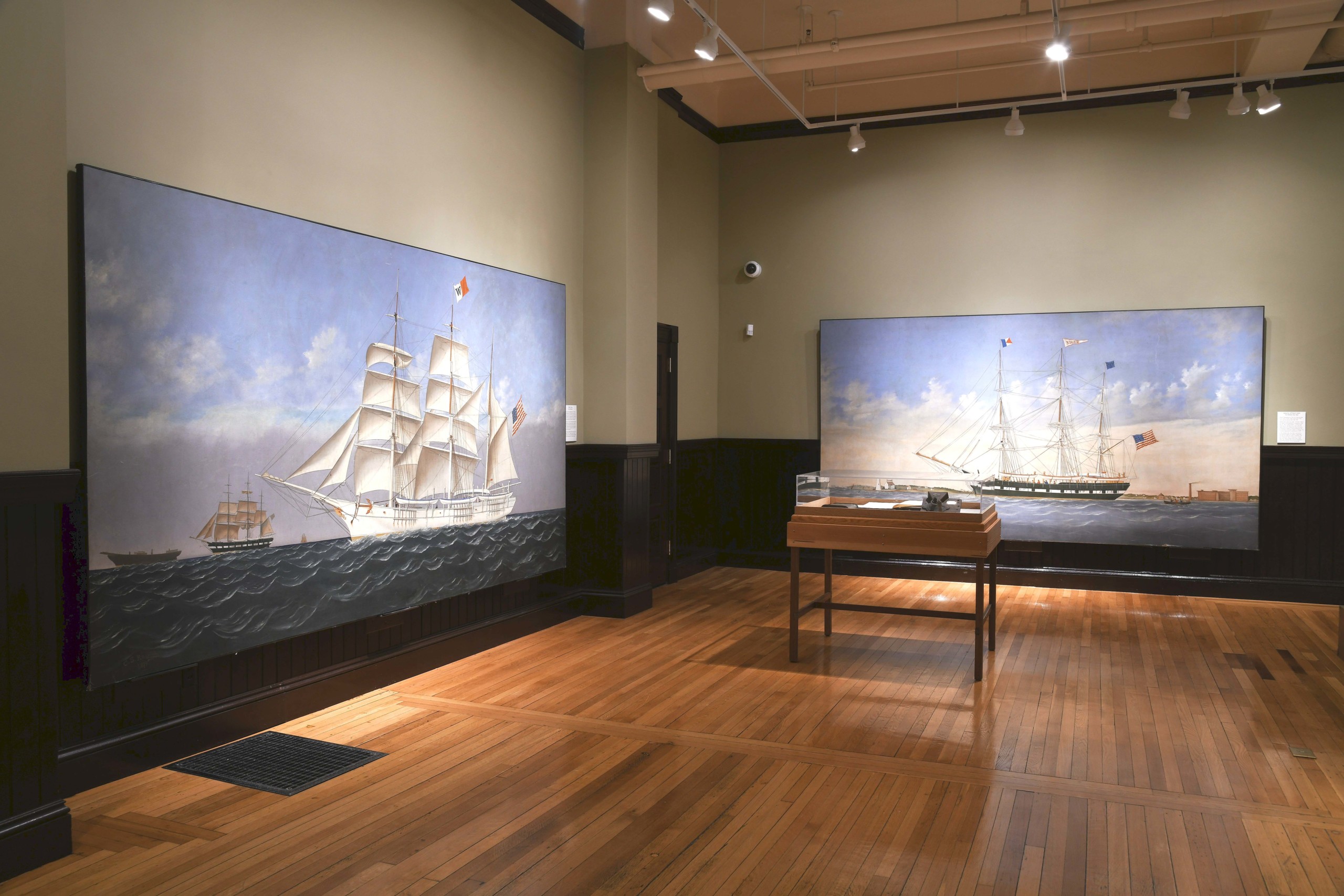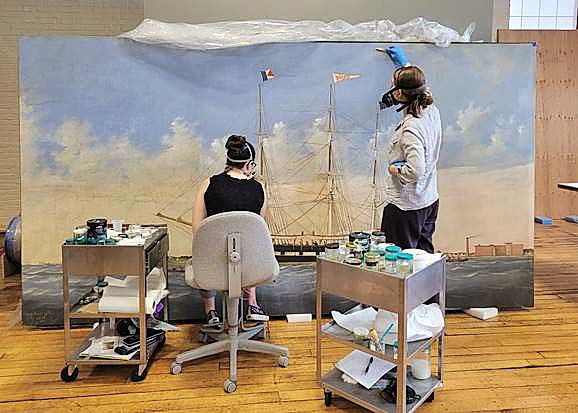#Gianfranco #Pocobene #Antiques #Arts #Weekly

Photo courtesy Gianfranco Pocobene.
After several months of painstaking restoration, the New Bedford Whaling Museum unveiled — on December 13 — Charles Sydney Raleigh’s “Panorama of a Whaling Voyage.” It is one of two panorama pictures at the New Bedford Whaling Museum and one of only eight known examples in US public institutions. Gianfranco Pocobene is the conservator whose Greater Boston studio took on the project, which received funding through the “Save America’s Treasures” program. A public program held in conjunction with the unveiling of the panorama prompted us to reach out to him to share some of the details of the conservation experience.
Can you please tell our readers something about yourself?
I have a master’s degree from the Art Conservation Program, Queen’s University, Kingston, Canada and have been practicing art conservation for almost 40 years. This includes 15 years at the Straus Center for Conservation, Harvard Art Museums and 20 years at the Isabella Stewart Gardner Museum. Throughout these years I have also run a private practice that specializes in the conservation and restoration of easel paintings and murals.
Tell our readers what was involved with conserving the panel of Charles Sydney Raleigh’s “Panorama of a Whaling Voyage”?
In the 1960s, the painting, which was part of a large panorama, was cut out and mounted onto a thick, aluminum panel with a wax-resin adhesive. This made it especially heavy and difficult to handle and display. Our work included cleaning the surface of the image to remove a darkened varnish layer and discolored overpaint and removal of the canvas from the aluminum panel. After detaching it, the wax-resin adhesive on the reverse of the canvas was removed mechanically and with solvents to prepare it for lining. The canvas was lined onto a linen canvas support with a reversible synthetic adhesive on our suction lining table which was heated under light pressure to bond the two canvases together. The lined painting was then attached to a custom built wood stretcher which reduced the weight from about 250 pounds down to about 65 pounds — so much easier to handle!. A thin layer of protective, non-yellowing varnish was applied to the painting and crease and other damages to the paint were in-painted with conservation grade pigments.

Two panels of Charles Sydney Raleigh’s “Panorama of a Whaling Voyage” on display during a 2021 exhibition: “Unvarnished: Conservation of Charles Sidney Raleigh’s Panorama of a Whaling Voyage.” The exhibition sought to raise funds for the conservation project in November 2021. Michael Lapides photo, New Bedford Whaling Museum.
How long did the project take?
380 hours in total spread out over about six months.
Have you conserved other panorama paintings before?
I have not, but my colleague, Corrine Long (she also holds a master’s degree from Queen’s University), who collaborated on this project worked on a panorama at the St Louis Art Museum in the summer of 2019; that involved paint stabilization and retouching of paint loss. However, our team has extensive experience treating large scale painted objects such as murals, stretching oversized canvas paintings, and mural wall paintings. We also have the uncommon experience of reversing many aluminum wax-resin linings.

Photo courtesy Gianfranco Pocobene.
Are there particular aspects of panorama painting conservation that are unique?
Panorama paintings are unique because they are typically created using flexible materials, such as thin and lightweight canvas and thin layers of paint — usually tempera — to enable extensive handling. They also exhibit signs of wear and tear because of their existence as an interactive object, such as rolling and unrolling, etc. This plays a role in how far we take our retouching. For instance, damages to the paint layers were toned to reduce their appearance but on close inspection you can see where they were. This was done intentionally to maintain the history of the object. This panorama is even more unique because it had been cut into separate scenes and mounted onto a solid support. Our firm has undertaken many reversals of canvas from aluminum supports but this was by far the largest and most time consuming. The biggest challenge was dealing with its size and weight.
Have you restored other paintings for the New Bedford Whaling Museum?
No, this is the first one.
—Madelia Hickman Ring
[Editor’s note: For more information on Pocobene’s studio, www.gpstudio.net.]




